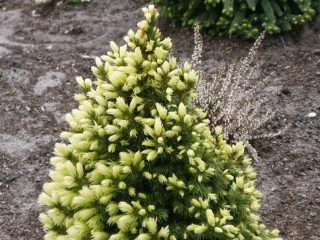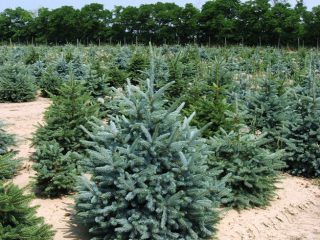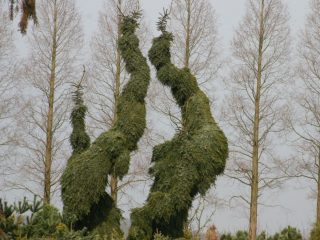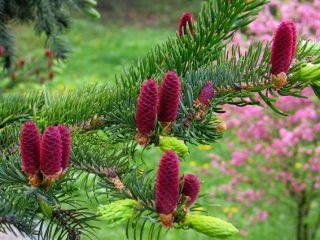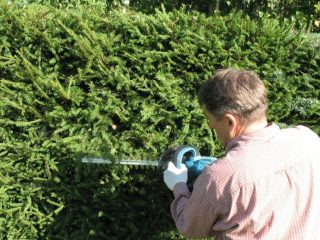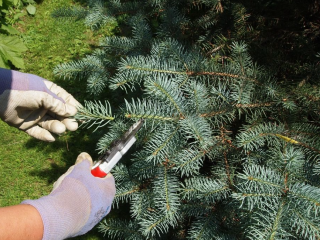Content
Weeping spruce is not the most common crop from the group of conifers. It is distinguished by the compelling structure of its branches, which suggests comparison with the weeping willow. Trees are used in landscape decoration because they have an interesting appearance and bring a special atmosphere to the garden.
Description and photo of weeping spruce
The plant may be a shrub and not have a central trunk. In this case, it is customary to talk about tall-growing stems laden with needles. Most are tree-like plants. Dwarf and tall conifers find their place among them.
Weeping spruce has the following crown shapes:
- conical;
- pyramidal;
- spherical;
- cylindrical.
Some varieties tolerate shearing well, and if desired, they can be given any geometric shape, turning the planting into a phytosculpture. Weeping spruce is unpretentious to external conditions. Loves fertile areas with good looseness.

The tree is found in southeastern forests, as it is a type of Caucasian spruce
A number of varieties act as a biological filter that purifies the air from machine gases.This is due to the presence of phytoncidal substances. However, not all conifers can withstand gas pollution.
Weeping spruce varieties
There are dozens of varieties of ephedra. In Russia, only a few people get along. Below are frost-resistant varieties of weeping spruce that have gained fame in the Moscow region and the central part of the country.
Inverse
The culture has a dark crown, the color of which remains unchanged throughout its life. The needles are short, but arranged very densely, creating a lush effect. The annual growth of the tree does not exceed 20 cm. In the early stages, development proceeds slowly, but by the second decade growth accelerates.
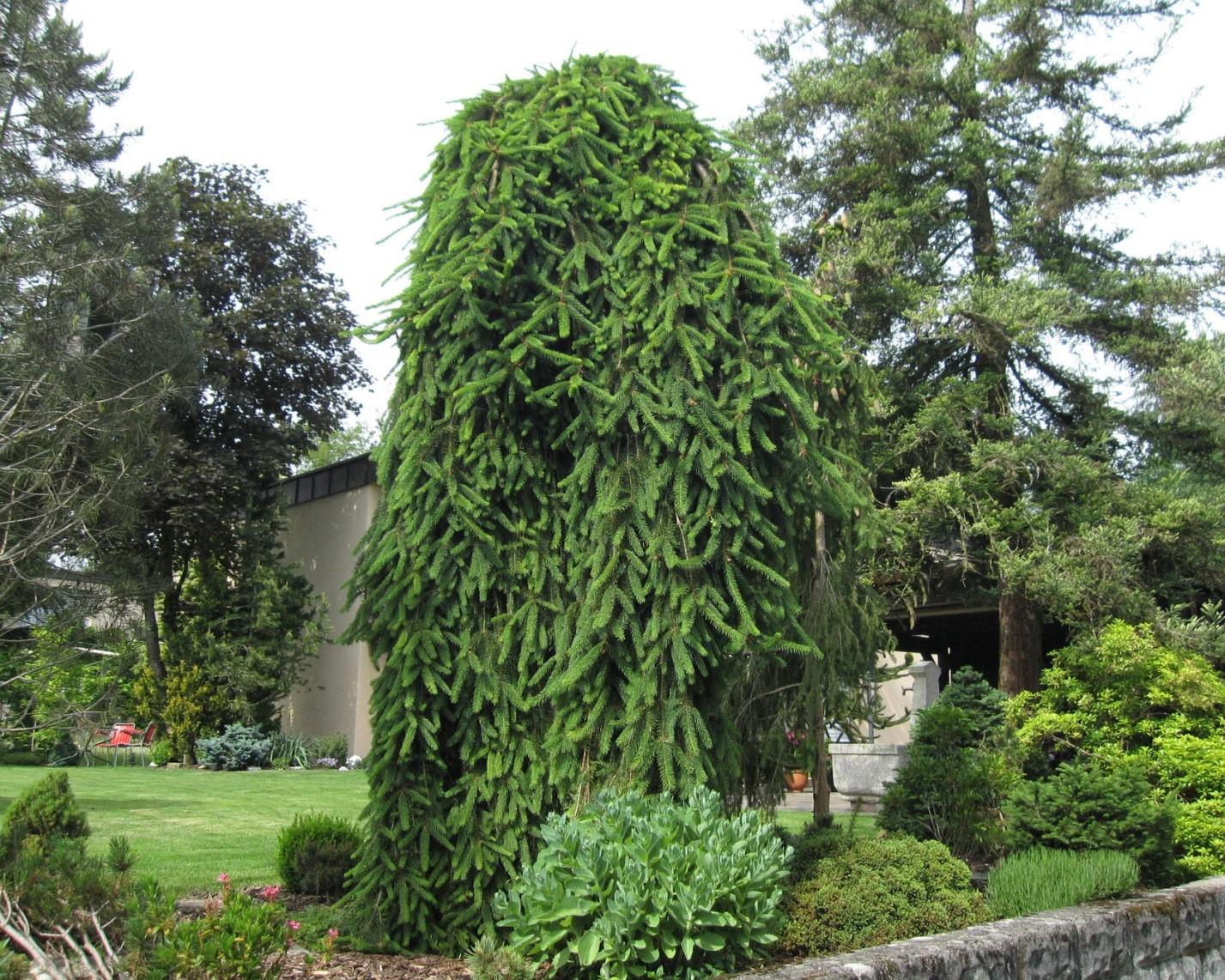
Young spruce trees are distinguished from adults by the color of their branches - seedlings are light brown, “teenagers” are almost brown, and full-fledged trees are chocolate
Frohburg
Another variety of weeping spruce, which belongs to the tree species. The branches of the plant always look down, layering on top of each other. To give the crown the desired shape, supports are used.
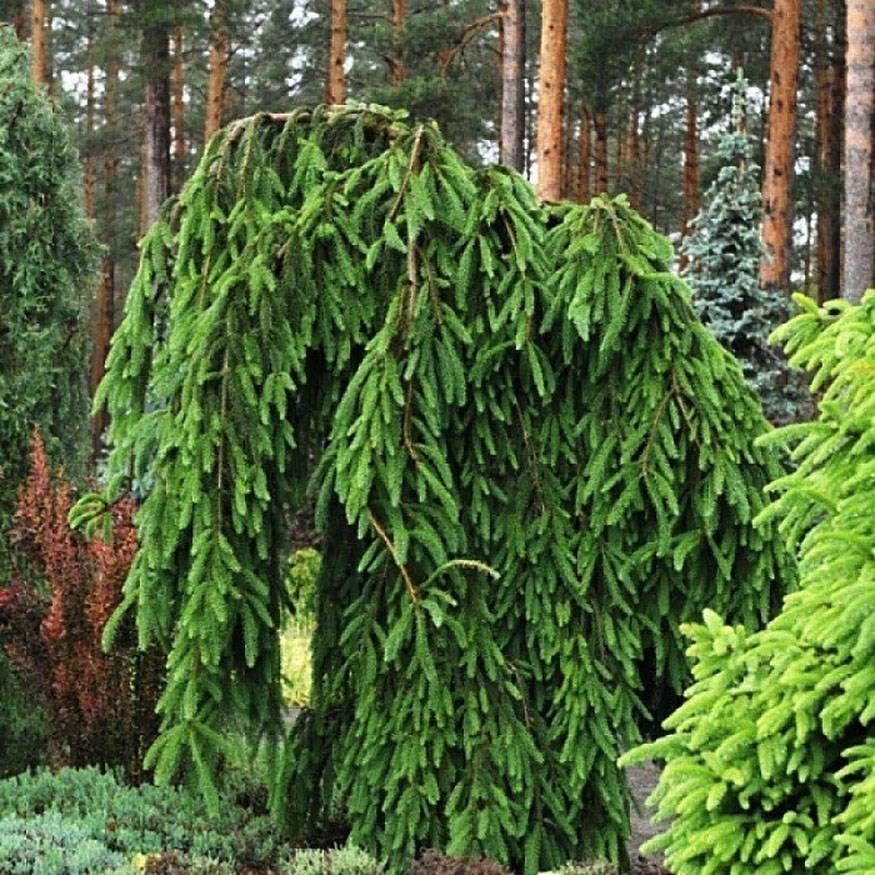
Frohburg has an average height and at 10 years of age exceeds 200 cm
The variety requires care and is sensitive to the surrounding air. It is difficult to grow a strong weeping spruce in urban areas; seedlings may suffer from burns.
Lorelei
The plant has an incredibly flexible trunk that gradually bends with age.

Externally, the crop resembles the Frohburg variety, but it is undersized
30-year-old trees reach no more than 300 cm. The crown width is 200 cm. The annual growth is about 10 cm, sometimes more, depending on conditions. The needles have a rich green color.
Bonfire
Weeping spruce stretches up to 12 m, its needles are distinguished by a bluish tint, almost silvery with plaque.Because of this feature, ephedra is grown in many countries.
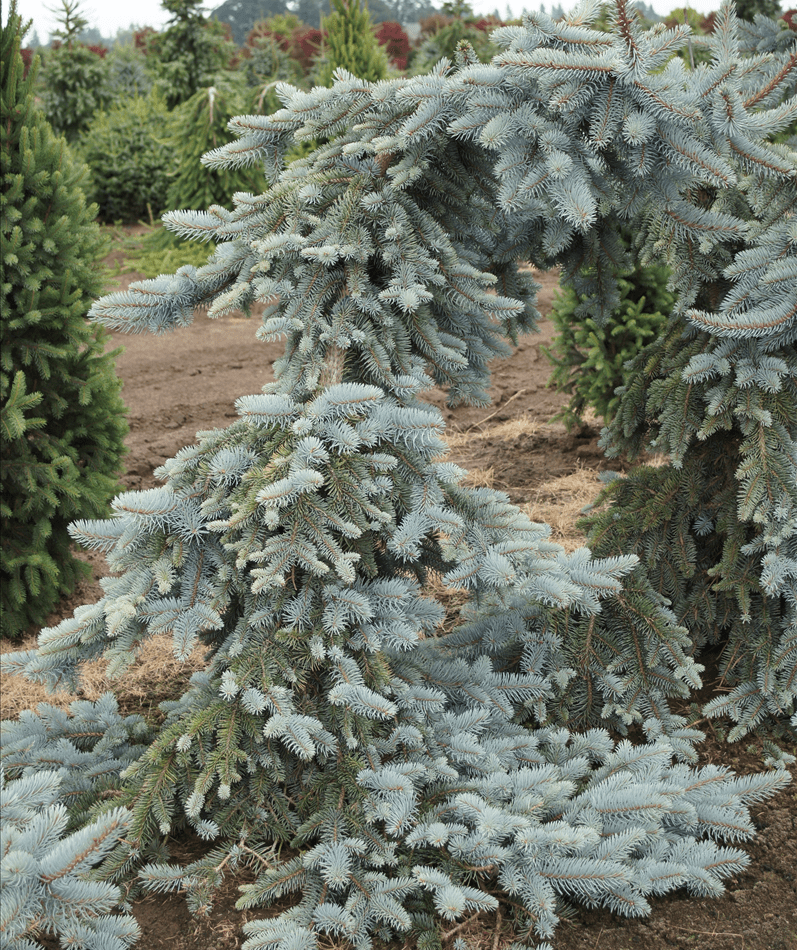
The foliage is located quite densely, the crown width is 5 m
The trunk of the Koster variety does not grow straight up, but slightly at an angle. The crown shape is conical. The culture is used in design, planted as a tapeworm or in a group with shrubs. This variety can serve as a New Year's tree.
Features of cultivation
Weeping spruce is not picky, but this does not mean that any conditions are suitable for it. The plant does not like dense or, conversely, swampy soil. Due to the sensitivity of the roots to moisture, conifers are not planted in lowlands where groundwater flows.
After digging the hole, drainage material is laid: in several layers or one - it doesn’t matter, the main thing is that the “cushion” is no thinner than 20 cm. When planting in groups, a distance of 200 cm is left between the plants. The dimensions of the hole are 50 x 60 cm.
Experts advise leaving the root collar flush with the surface. For rapid growth, you can mix the soil with nutritious fertilizer. If it is not possible to buy a store-bought composition, use peat, dry leaves and sand. The components are combined in equal proportions and then diluted with water.
Weeping spruce does not tolerate heat well and needs additional moisture in the summer. Water weekly - once, spending up to 10 liters of water per seedling.

It is recommended to loosen the tree trunks of young crops and it is important to do this immediately after watering
The arrival of the first winter is painful for many plants. In order for a weeping spruce to adapt faster, it should be watered thoroughly. Frosting of a tree is not the primary reason why it dies.More often this happens due to lack of water: the roots have nothing to drink, and they dry out.
Preparing for winter involves mulching. To do this, the tree trunk circle is covered with a 5 cm layer of peat. In spring, the mulch is mixed with the rest of the soil, resulting in a nutritious top dressing.
Depleted soil must be enriched twice a season. The tree does not require sanitary pruning, and most varieties tolerate decorative pruning well. If propagation is necessary, cuttings are used. Professionals can grow weeping spruce by grafting.
Photo of weeping spruce in landscape design

When combining several conifers, it is recommended to highlight the contrast by planting non-monotonic plants

Mini-gardens where dwarf conifers grow are popular in the West.

The trunks of some varieties are so flexible that designers use spruce trees as vines
Conclusion
Weeping spruce is a special tree. It is special because it has hanging branches, usually not very long, but dense. The plant is actively used in landscape decoration and has earned the love of many summer residents.
